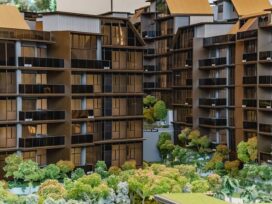
Powering Tomorrow: Unveiling the Art and Science of Capturing Sunlight
The sun, a colossal fusion reactor in the sky, bathes our planet in an inexhaustible supply of energy. For centuries, humanity has gazed upon its brilliance, and in recent decades, we’ve increasingly turned our ingenuity toward capturing this radiant power. The ability to transform sunlight directly into usable electricity is no longer a futuristic fantasy; it’s a tangible reality reshaping how we power our lives and interact with our environment. Understanding the intricacies of this transformation, particularly the process of setting up the systems that make it possible, is becoming increasingly vital in our energy-conscious world.
The journey of harnessing solar energy begins with meticulously designed components engineered to capture photons – the fundamental particles of light. These carefully crafted surfaces, often dark and reflective in specific ways, are the front line in converting solar radiation into electrical current. But the individual components are just one piece of the puzzle. The true magic unfolds when these elements are strategically integrated into a cohesive system, a process that requires careful planning, precise execution, and a deep understanding of both electrical engineering and structural considerations.
Laying the Foundation: Site Assessment and System Design
Before any physical work begins, a thorough assessment of the location is paramount. Factors like the amount of sunlight the site receives throughout the year, the orientation and pitch of existing structures (if applicable), and any potential shading from trees or neighboring buildings are meticulously analyzed. This initial evaluation is crucial for determining the optimal size and configuration of the energy-generating system. Sophisticated software tools and experienced professionals play a vital role in this stage, ensuring that the proposed setup will maximize energy production and meet the specific needs of the user.
Once the site’s characteristics are understood, the next step involves designing the system itself. This includes determining the number of individual energy-capturing units required, the type of mounting hardware necessary to securely affix them, and the specifications for the electrical wiring and inverters that will convert the captured energy into usable alternating current (AC) for homes and businesses. This design phase also considers safety features, such as grounding systems and surge protection, to ensure the long-term reliability and safety of the installation.
The Physical Transformation: Mounting and Wiring
The physical act of solar panel installation is a blend of careful craftsmanship and technical expertise. Depending on the location – whether it’s a sloped rooftop, a flat commercial building, or a ground-mounted array – specialized techniques and equipment are employed to securely attach the mounting structures. These structures must be robust enough to withstand various weather conditions, from strong winds to heavy snow loads, ensuring the longevity and stability of the entire system.
Once the mounting framework is in place, the individual energy-capturing units are carefully positioned and secured. Precision is key here, as the alignment and spacing of these units can impact overall energy generation. After the physical mounting is complete, the intricate work of electrical wiring begins. Qualified electricians connect the individual units in series and parallel configurations, depending on the system’s voltage and current requirements. These connections must be meticulously executed to ensure efficient energy flow and prevent any electrical hazards.
The direct current (DC) electricity generated by the units then flows to one or more inverters. These crucial devices perform the vital task of converting DC electricity into AC electricity that powers most modern appliances and electrical grids. The size and type of inverter used will depend on the overall capacity of the system and the specific requirements of the application.
Connecting to the Grid: Interconnection and Metering
For many installations, particularly those in residential and commercial settings, the system is designed to be interconnected with the existing electrical grid. This allows users to draw power from the grid when their solar production is low (e.g., at night or on cloudy days) and to send excess energy back to the grid when their system generates more power than they are currently using. This two-way flow of electricity requires coordination with the local utility company and the installation of specialized metering equipment that can accurately measure both the energy consumed and the energy exported.
The process of grid interconnection typically involves an application process, inspections by the utility company, and the installation of a net meter. This meter records the difference between the electricity flowing into the building from the grid and the electricity flowing out to the grid, allowing users to potentially receive credits on their electricity bills for the excess solar energy they generate.
The Sunny Side of Solar in the Valley of the Sun: Considerations for Solar Panels in Phoenix
In regions like solar panels in Phoenix, the abundant sunshine makes harnessing solar energy particularly advantageous. However, the unique climate of the desert Southwest also presents specific considerations for solar panel installation. High temperatures can impact the efficiency of some solar technologies, so choosing panels designed to perform well in hot climates is important. Additionally, dust and debris can accumulate on the panels, reducing their energy output, so regular cleaning and maintenance are crucial.
The intense sunlight in areas like Phoenix also means that the potential for energy savings is significant. Homes and businesses in this region can often offset a substantial portion, if not all, of their electricity consumption by investing in solar energy systems. Furthermore, local and federal incentives, such as tax credits and rebates, can help to reduce the upfront cost of solar panel installation, making it an even more attractive option for those looking to reduce their energy bills and environmental footprint. Understanding these regional nuances is essential for optimizing the performance and economic benefits of a solar energy system.
Beyond the Installation: Monitoring and Maintenance
Once the solar panel installation is complete and the system is operational, the journey doesn’t end. Regular monitoring is essential to ensure that the system is performing as expected. Many modern systems come equipped with monitoring software that allows users to track their energy production in real-time, identify any potential issues, and assess the overall performance of their investment.
Routine maintenance, such as periodic cleaning of the panels to remove dust and debris, can help to maintain optimal energy output. In some cases, professional inspections may be recommended to check for any wear and tear or potential problems with the system components. With proper care and attention, a well-designed and installed solar energy system can provide clean, reliable power for decades, contributing to a more sustainable energy future.
The transition to solar power represents a significant step towards a cleaner and more resilient energy infrastructure. The process of solar panel installation, from initial site assessment to final grid interconnection, is a testament to human ingenuity and our commitment to harnessing the power of the sun. As technology continues to advance and the cost of solar energy decreases, the widespread adoption of these systems promises a brighter and more sustainable tomorrow for all.







